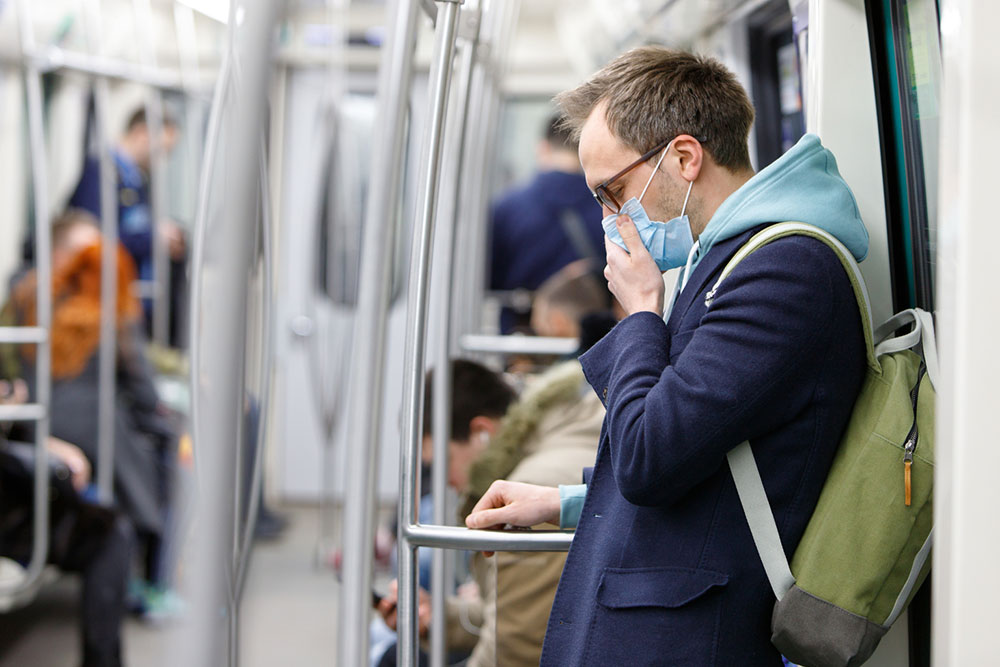7 places that are hotspots for respiratory viruses

Although the lockdown is long over, the time has left its mark on one. Even after over three years since the first virus outbreak, new variants of the virus continue infecting people worldwide. Public places have always acted as hotspots for the spread of respiratory viruses, as they involve close contact and interaction. To ensure that one is informed of the risks, here are some public places characterized by quick spread of respiratory viruses:
Trains, flights, and cruises
While the global travel and tourism industry has recovered from its standstill, the Centers for Disease Control and Prevention still advises passengers to wear masks while using public transportation like trains, flights, and cruise ships. It is also essential to follow other basic hygiene practices like washing one’s hands or sanitizing frequently and maintaining social distancing as much as possible while traveling in these modes of transport.
Nursing homes
The lockdown phase witnessed several cases of the virus spreading among patients at hospitals and nursing homes. Reports state that long-term healthcare facilities and nursing homes have been responsible for 40% of all casualties during the pandemic. Since respiratory viruses continue to infect people, one should visit or seek treatment only from healthcare centers that follow strict measures to prevent their spread. Some of these measures include the use of disinfectants and gloves, proper ventilation, and regular use of masks, sanitizers, and handwashes by staff members.
Fitness centers
Fitness centers and gyms often lack adequate ventilation, which can accelerate the spread of respiratory infections. Moreover, high-intensity exercises performed at gyms typically increase the number of respiratory particles released into the air, increasing one’s risk of contracting respiratory viruses. Outdoor exercises are better alternatives to working out indoors, as open spaces and increased social distancing can reduce one’s susceptibility to viruses. However, if working out indoors is inevitable, one should look for gyms with proper ventilation and practice adequate hygiene measures.
Schools
Children are generally more vulnerable to respiratory infections than adults, and schools can become breeding points for such infections if adequate measures are not followed. Hence, parents should be extremely vigilant while enrolling their children in schools, ensuring that teachers and staff members follow hygiene practices on the premises, encourage social distancing, and promptly isolate children who fall ill during school hours. Parents should also avoid sending their children to school when they are unwell.
Pools and beaches
While there is sufficient space for air passage in outdoor pools and beaches, people tend to spend considerable time at a stretch in these places, making them hubs for the spread of respiratory viruses. Moreover, since swimming involves heavy breathing, it can increase swimmers’ risk of contracting the virus when they come in close contact with infected persons. The key is to avoid visiting these places when they are overcrowded, selecting a suitable time during odd hours to relax and unwind.
Public gatherings
All public gatherings, including religious gatherings, exhibitions, sports events, and concerts, are characterized by a high risk of contracting respiratory viruses. However, with pandemic restrictions lifted, it is impossible to stay away from social events and gatherings. Thus, the best bet is to try and attend public events taking place at spacious venues, where social distancing may be practiced easily. It is also important to inquire with the organizers about measures followed at the venue, such as disinfection rules and the provision of hand sanitizers for all patrons. Finally, one should not forget to wear a clean mask to such events.
Indoor restaurants
Restaurants host hundreds of customers simultaneously, increasing the risk of respiratory infections. Restaurants with indoor seating are particularly riskier than those with al fresco dining, as these entail closed spaces and increased proximity. It helps to choose outdoor dining venues whenever possible; however, if one chooses to dine at an indoor restaurant, it is important to pick one that is properly ventilated, follows hygiene practices meticulously, and is not congested.
Besides being careful while visiting the public spaces mentioned above, one should ensure getting an authorized COVID-19 vaccine administered at the nearest healthcare facility. For example, the Novavax vaccine was found to be 90% effective against mild, moderate, and severe disease and has been approved by the FDA. The vaccine is suitable for all individuals aged 12 and above and can also be administered to individuals who have had COVID previously. It is also safe to be administered to pregnant women; however, they should consult a doctor before taking the vaccine.






